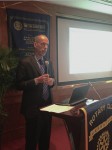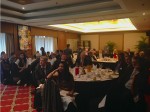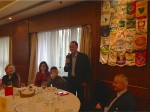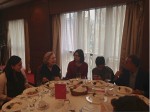Mr. Jurgen Conrad, the head of the Economic Unit at Asian Development Bank, spoke about “The People’s Republic of China in 2015 and 2030” at our weekly lunch.
See here a short overview of his interesting insight:
China’s high long-term GDP growth has been slowing down from the average of 10% in 1980-2009 to an average 8.3% in 2010-2014.This was mostly caused by structural changes in the Chinese economy. In 2015, economic deceleration and rebalancing will continue, which will cause China’s GDP to continue to stay around 7% to 7.5%. Industry and Investment will keep going down as the government is trying to reduce the industrial overcapacity, lower local government debt and maintain a tighter monetary supply, while service and consumption will grow as the state’s spending on social spending and urbanization will drive the income growth. Past growth drivers of state’s led investment, low-cost advantage, and demographic dividend are becoming less relevant, as China stays on the course of restructuring and encouraging more private investment. Dr Jurgen believes that unless the Chinese government is committed to economic restructuring it will lose this window of opportunity to steer the country to more sustainable growth.
In restructuring the economy, China is facing the challenges of raising its productivity, improving its business climate, reforming its education and continuing the urbanization. Each of these challenges presents a formidable task.
(pics by Celine)
On another note, it was good to hear that the Rotary Bazaar made still quite a nice sum, even if attendance figures were lower than last year. See also the poster of the play “Robin Hood” starting from 5 December, another great exploit of Rotarian Chris Verrill.





